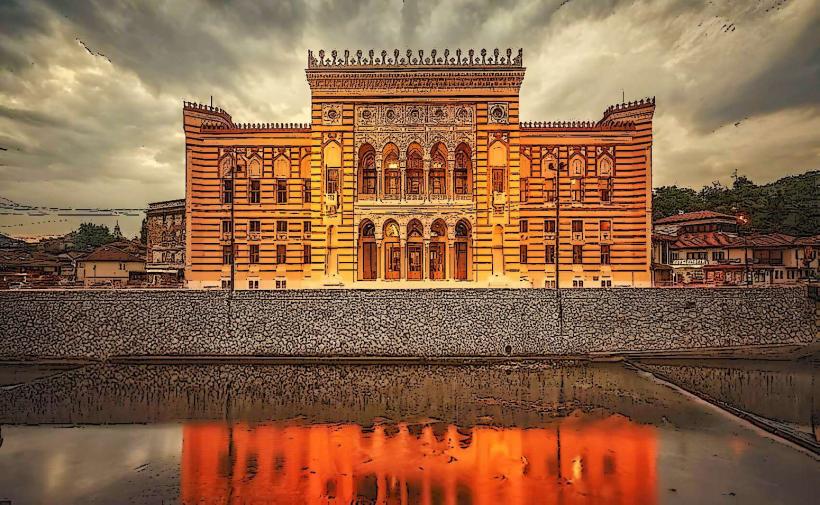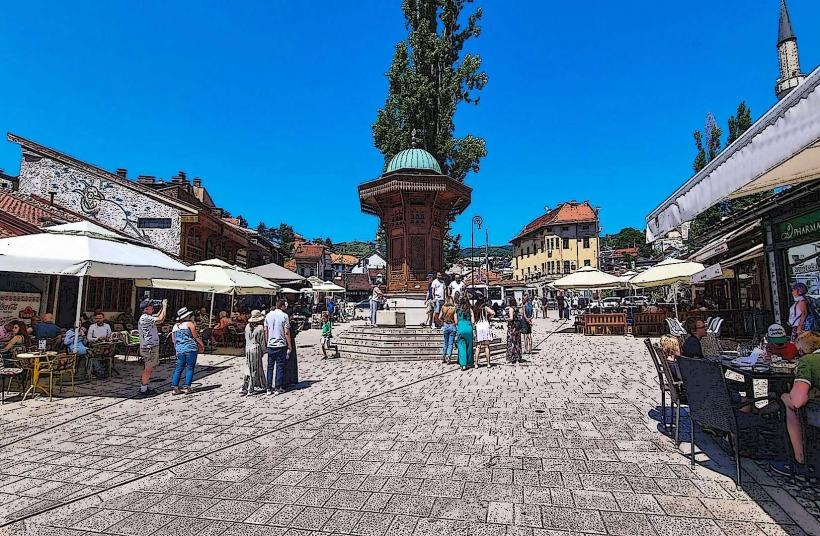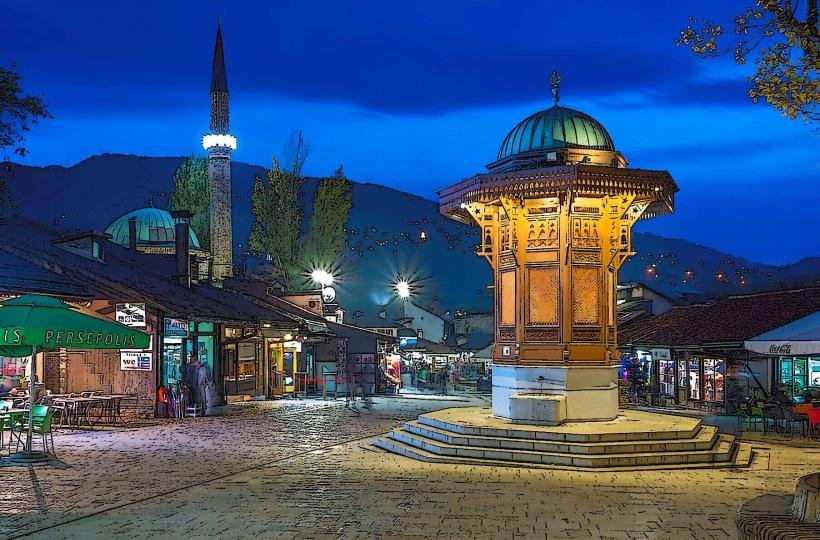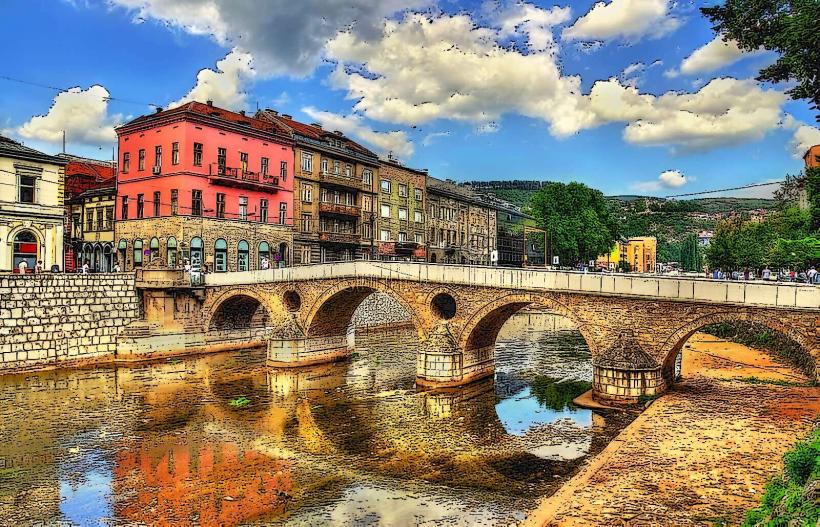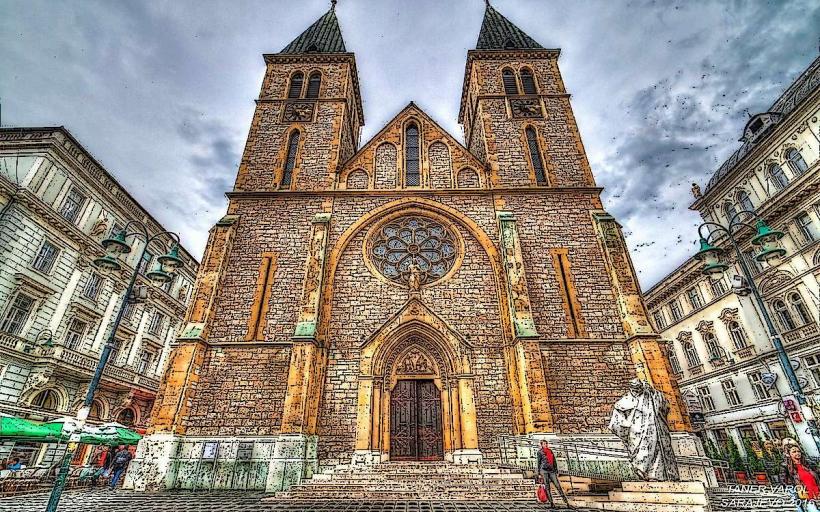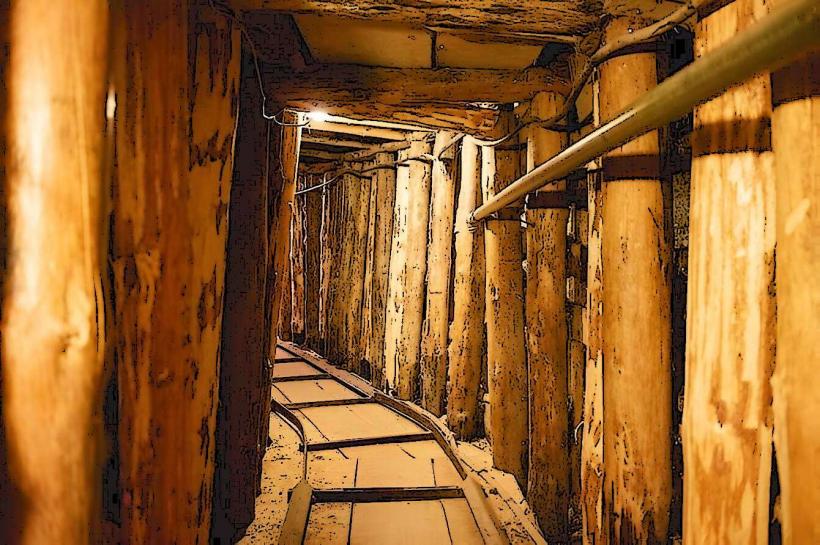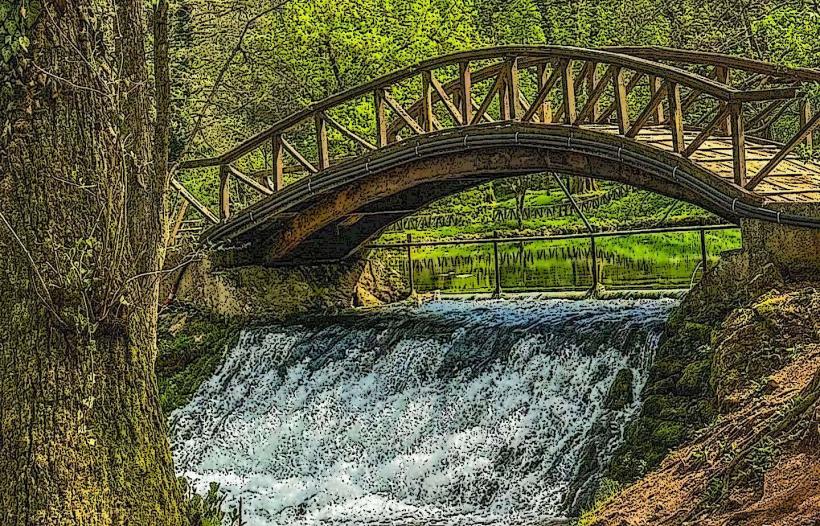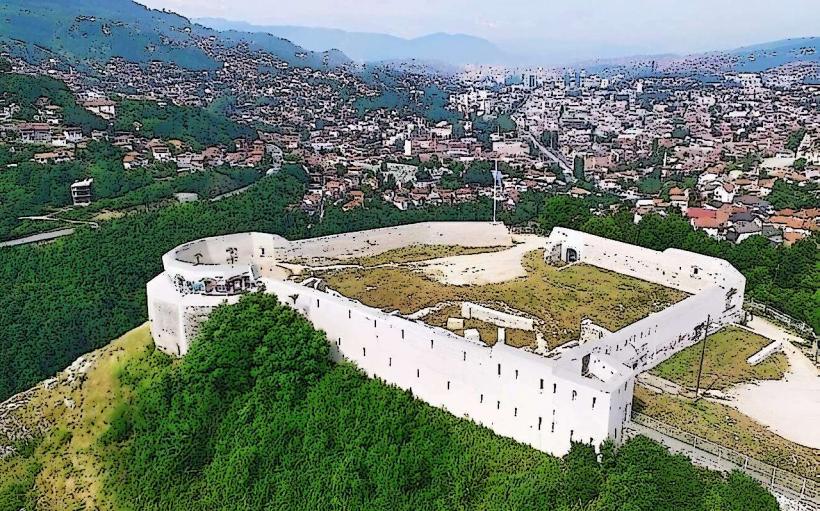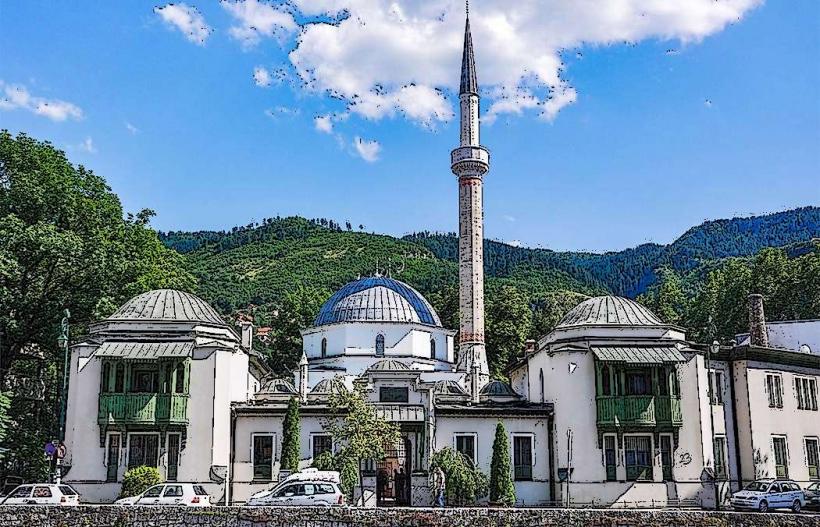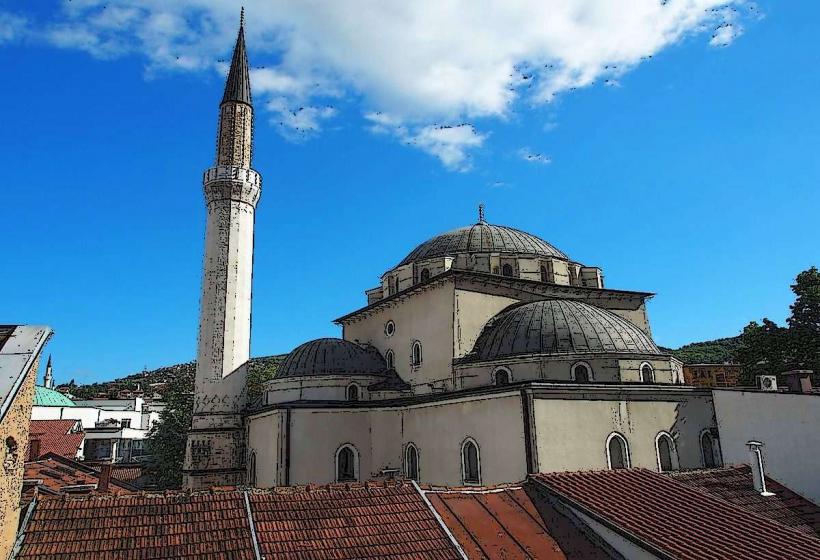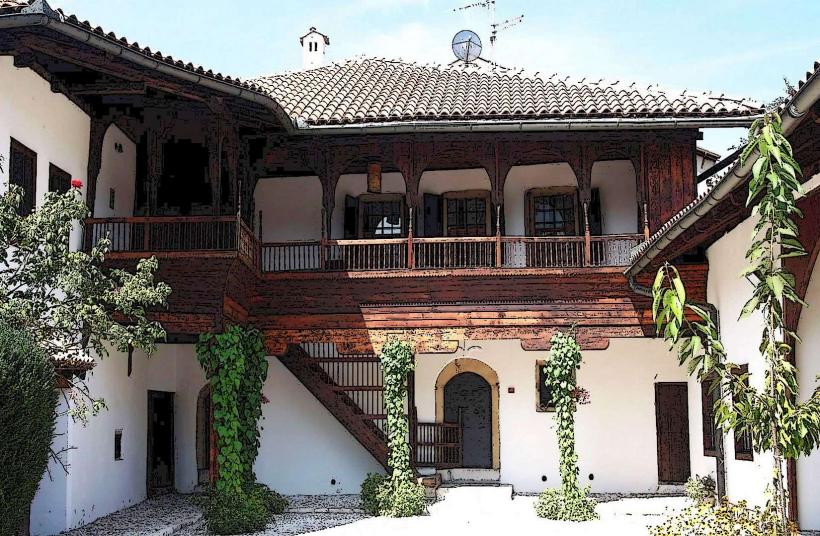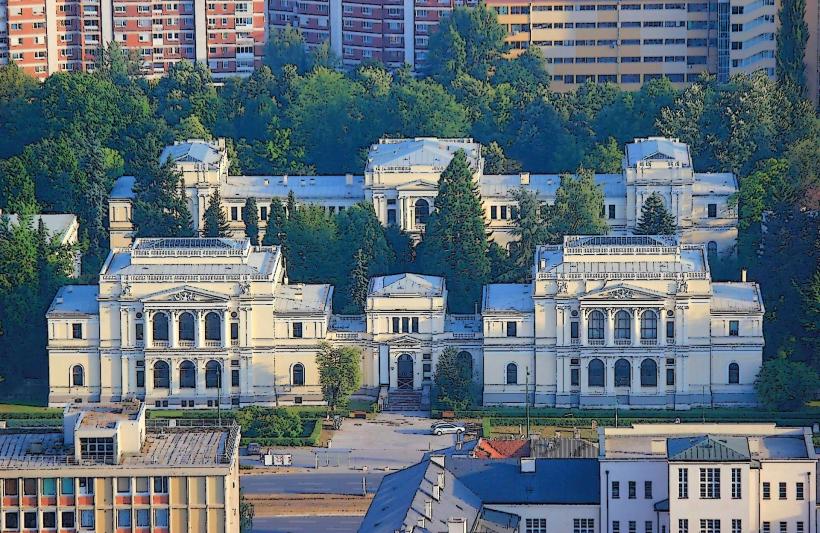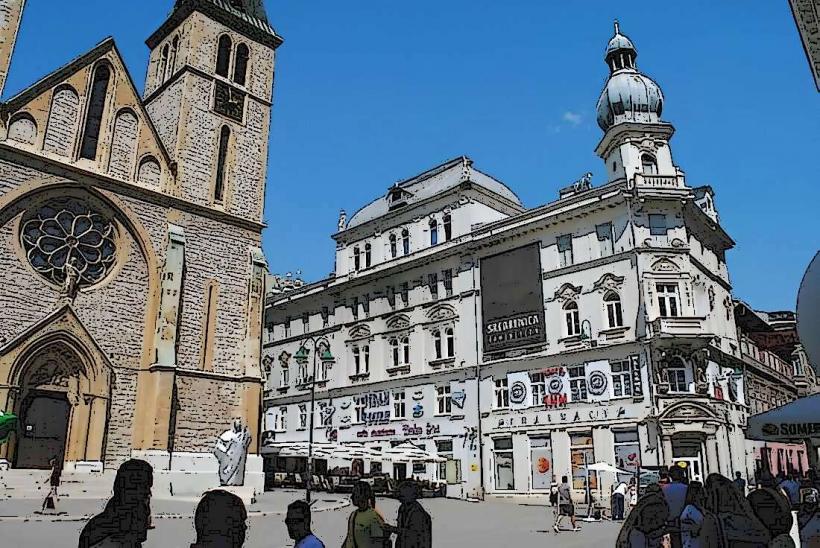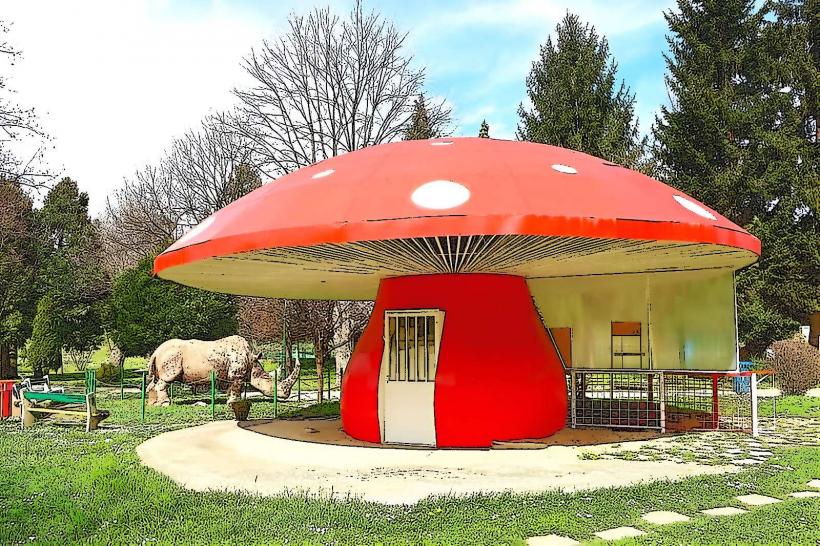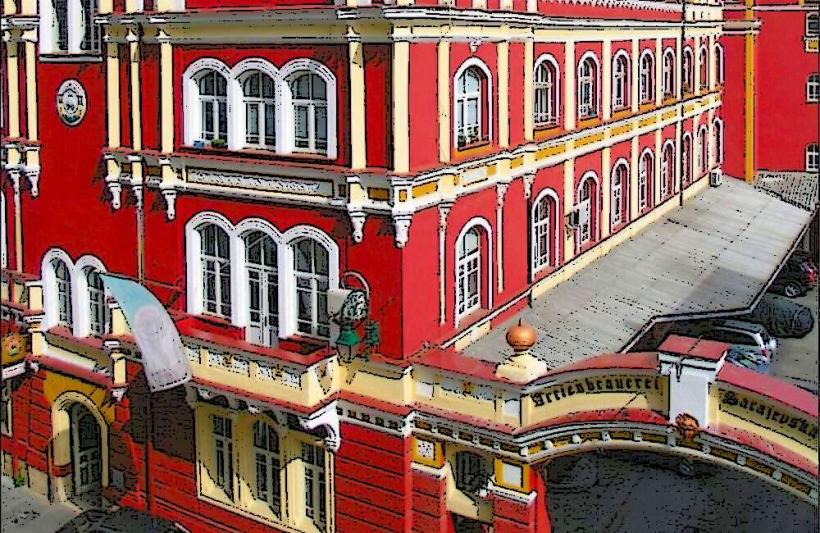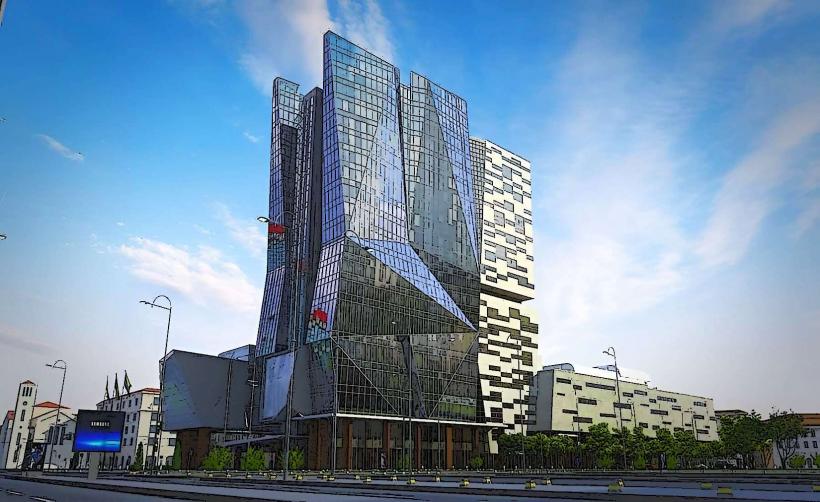Information
Landmark: Gazi Husrev-beg MosqueCity: Sarajevo
Country: Bosnia and Herzegovina
Continent: Europe
The Gazi Husrev-beg Mosque is one of the most important and iconic landmarks in Sarajevo, Bosnia and Herzegovina. This mosque is a prime example of Ottoman architecture and holds significant historical, cultural, and religious value in the city. It is located in the heart of Baščaršija, Sarajevo's old town, and stands as a symbol of the city’s Ottoman heritage.
Historical Background
The Gazi Husrev-beg Mosque was built in 1531 by Gazi Husrev-beg, an influential Ottoman governor of the Bosnian Province. He was one of the most prominent figures in Sarajevo’s history, and his contributions to the city’s development extended beyond just the mosque. The mosque was constructed as part of a larger complex that included a medresa (Islamic school), hammam (Turkish bath), library, and a courtyard with fountains, making it an integral part of the city’s Ottoman-era social and religious life.
As the mosque is located in the heart of Baščaršija, its establishment solidified the neighborhood as the central hub of Islamic faith in Sarajevo. The mosque was not just a place of worship but also a cultural and intellectual center for the Ottoman Muslims living in Sarajevo and the surrounding regions.
Architectural Features
The Gazi Husrev-beg Mosque is considered one of the finest examples of Ottoman architecture in the Balkans. The design of the mosque is a blend of Ottoman and Byzantine architectural elements, with influences drawn from both the architectural traditions of the Middle East and the local Bosnian style.
Exterior: The mosque’s exterior is made from sandstone, with intricate Ottoman-style decoration. The domed roof is one of the mosque’s most striking features, and it rises above the courtyard and surrounding buildings in the heart of the city. The minaret of the mosque stands tall at 45 meters, serving as a prominent feature of Sarajevo’s skyline.
Interior: The interior of the mosque is just as stunning, with elegant decorations and calligraphy adorning the walls and ceilings. The central prayer hall is spacious, with high vaulted ceilings and a large mihrab (niche indicating the direction of Mecca). The walls are decorated with geometric patterns, arabesques, and inscriptions from the Quran, reflecting the artistic and religious influences of the Ottoman period.
Fountain: The mosque has a beautiful fountain in the courtyard, which is a common feature in Ottoman mosque complexes. This fountain symbolizes the purification of the body and soul, and it is used by worshippers for ritual washing (wudu) before prayer.
Pulpit and Mimbar: The mosque features an ornately carved wooden pulpit (minbar), from which the imam delivers the Friday sermons. The pulpit is intricately designed, showcasing Ottoman craftsmanship and artistry.
Cultural and Religious Significance
The Gazi Husrev-beg Mosque is not just a religious site; it is an important cultural symbol of Sarajevo’s rich history. It represents the city’s role as a center of Islamic scholarship, culture, and religious diversity within the Ottoman Empire. The mosque is considered one of the most important monuments of Islamic heritage in Bosnia and Herzegovina.
The mosque remains active as a place of worship and continues to serve as a center for the Islamic community in Sarajevo. It is a focal point for daily prayers, Ramadan services, and other religious events. It is also a place of pilgrimage for many, especially during important religious occasions such as Eid and Friday prayers.
Restoration and Preservation
Over the centuries, the mosque has undergone several periods of restoration and repair to preserve its original beauty and architectural integrity. It was heavily damaged during the Siege of Sarajevo in the 1990s but was restored after the war. The restoration work aimed to maintain the mosque’s historical appearance while ensuring its continued use as a place of worship and cultural heritage.
Surrounding Complex
The Gazi Husrev-beg Mosque is part of a larger complex that includes several important buildings, each contributing to the cultural life of Sarajevo:
Gazi Husrev-beg Library: Founded in 1537, it is one of the oldest libraries in Bosnia and Herzegovina and houses a large collection of Ottoman manuscripts and historical documents.
Gazi Husrev-beg Medresa: The Islamic school, founded by Gazi Husrev-beg, is still in operation today, providing education based on Islamic teachings.
Hammam (Turkish Bath): The hammam was an essential part of the mosque’s social and cultural activities during the Ottoman period. It is a reflection of the Ottoman lifestyle and is an important part of Sarajevo's historical heritage.
Visitor Experience
Today, the Gazi Husrev-beg Mosque is one of Sarajevo's top tourist attractions. Visitors can explore the mosque and its surrounding complex, and experience the atmosphere of a mosque that has played a central role in the history of Sarajevo for nearly five centuries.
Educational Tours: The mosque and its surrounding buildings offer educational tours where visitors can learn about Ottoman history, Islamic architecture, and the significance of the mosque in Sarajevo’s cultural and religious development.
Cultural Events: The mosque often hosts Islamic events, including religious lectures, prayer services, and cultural programs, which visitors can attend.
Photography and Souvenirs: The mosque is a popular spot for photographers due to its stunning architecture and historical significance. Visitors can also purchase traditional Bosnian crafts and Islamic art in the area surrounding the mosque.
Conclusion
The Gazi Husrev-beg Mosque is a key cultural, religious, and architectural symbol of Sarajevo and Bosnia and Herzegovina. It is a living testament to the city’s Ottoman past and continues to serve as a place of worship and a center for cultural activities. Its historical significance, combined with its architectural beauty, makes it a must-see for anyone visiting Sarajevo. Whether you are a history enthusiast, a religious pilgrim, or simply a traveler interested in exploring the beauty of Sarajevo, the Gazi Husrev-beg Mosque offers an unparalleled glimpse into the city’s rich heritage.

